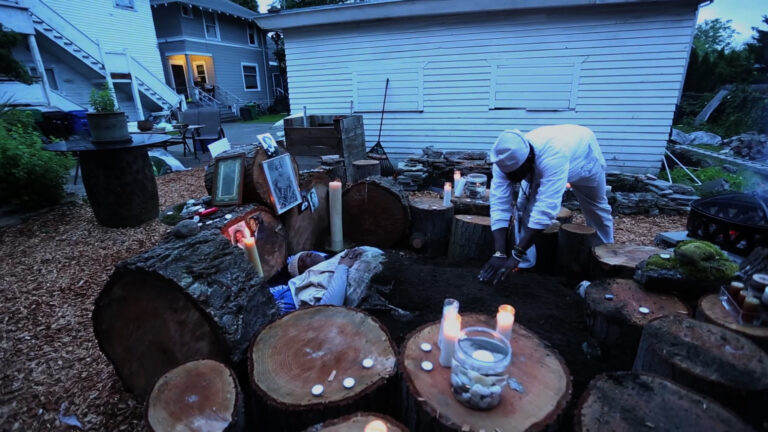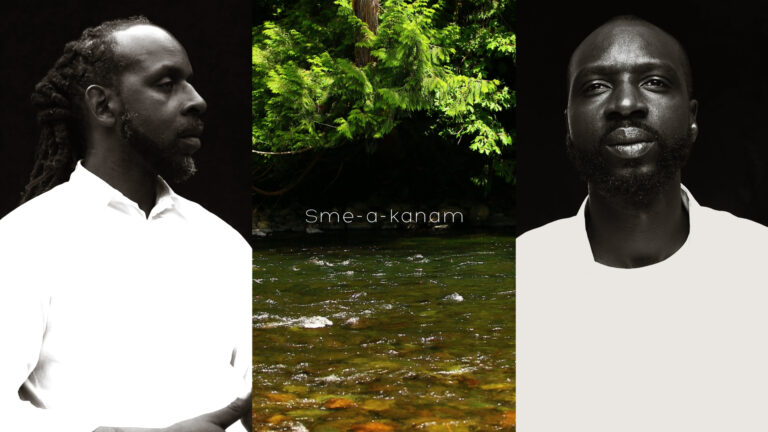This Is Who We Are was a multi-media installation exhibited at The Frye Art Museum in 2016. Inspired by meditations on land and lineage, nature and ancestry, This Is Who We Are investigates the evolving relationship between place and identity through the lens of spirituality and indigenous traditions.
This Is Who We Are reflects Wokoma’s family heritage, which has roots on his mother’s side in African culture of the American South, and on his father’s side in the Niger Delta Ijo/Kalabari cultures and traditions. This melding of ancestry—the convergence of two distinctive sets of family traditions—is the foundation of Wokoma’s cultural and spiritual journey as illustrated in This Is Who We Are. The exhibition explores the ways that complex family histories inform our identities and give shape to our social and political realities.
This Is Who We Are examines how migration and displacement force cultures to change and adapt. What is retained, what is lost, and what is generated anew when communities are moved? A lifelong resident of Seattle’s Central District—a neighborhood undergoing rapid redevelopment—Wokoma acknowledges that his home is built on the ancestral land of the Duwamish. As he resists gentrification by fighting to retain his place in the neighborhood, Wokoma concedes his participation in a cycle of displacement: “I live amongst the Duwamish, in the midst of their perpetual displacement and dislocation. I know that the politics of my resistance cannot be separated from the politics of their displacement.”
This Is Who We Are is a deeply personal exploration of questions relating to Wokoma’s identity and our collective reality as co-inhabitants of this place and time. Central to the exhibition is a multi-channel video work that is both performative and cinematic. It documents a ceremonial ritual performed by the artist whereby the living and ancestral members of Wokoma’s family are introduced to the living and ancestral members of the Duwamish. Wokoma notes:
The performance emerges and takes form out of personal spiritual and psychological constructs. It extrudes from a broad understanding of the cosmology forming my peoples’ indigenous spiritual systems while recognizing the importance of invention in addressing new problems of human existence. The cinematic tradition is the means through which this performance is communicated in a public space, the museum. The vernacular is symbolic, non-linear, and ritualistic.



